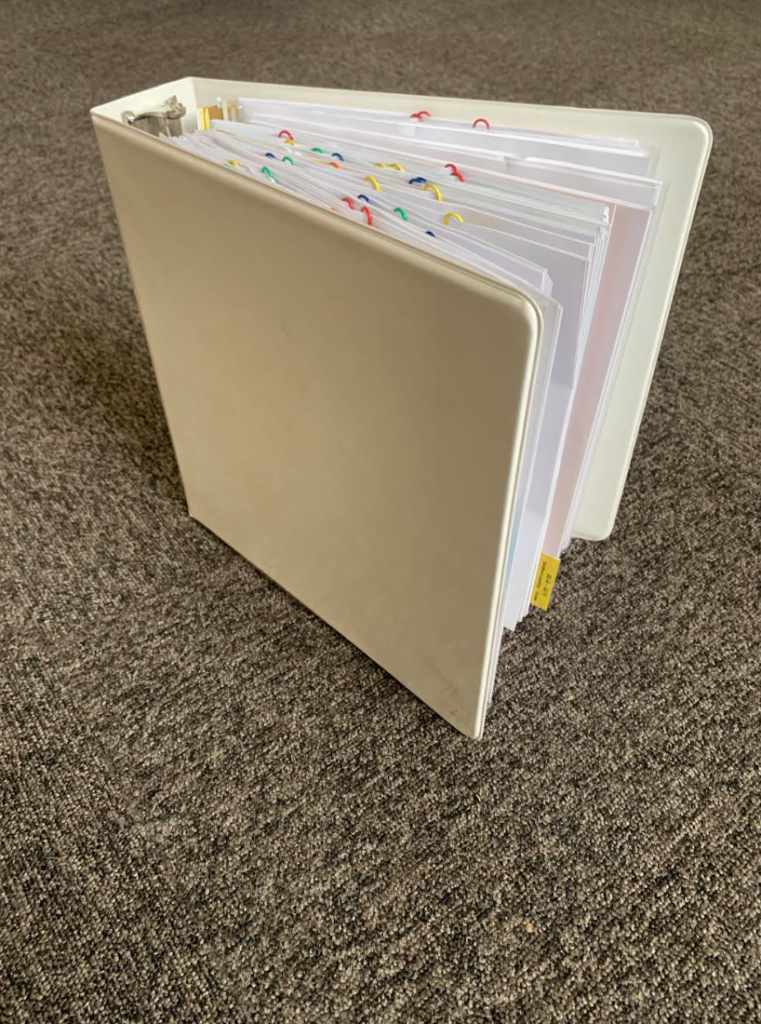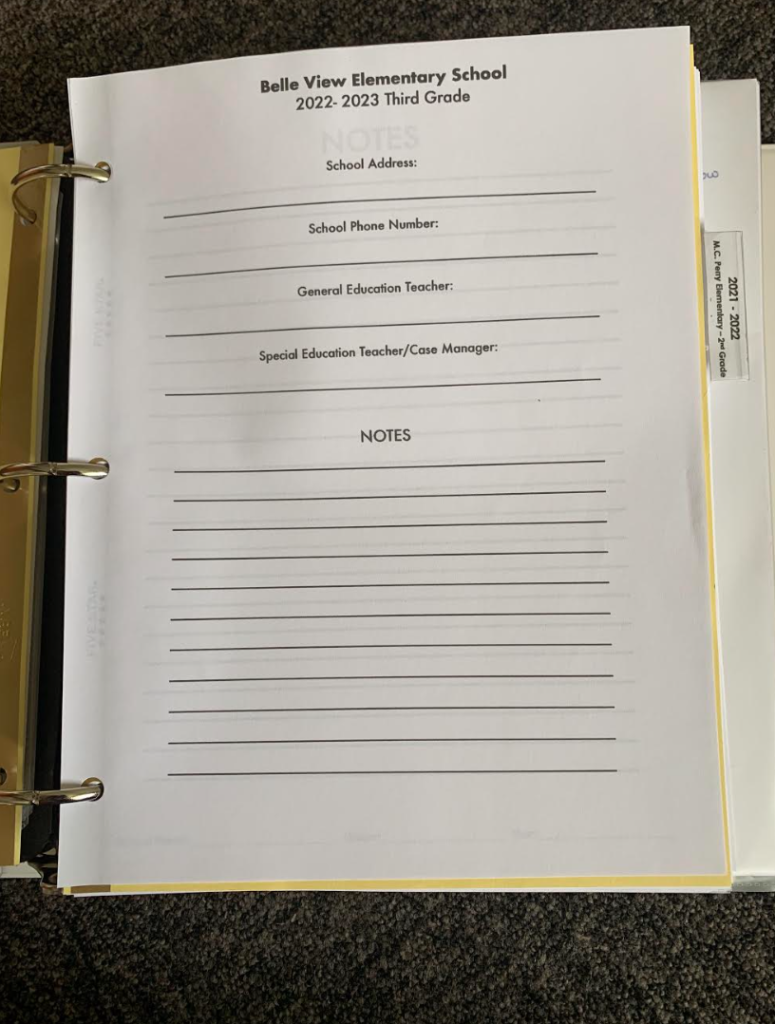As you sip your Starbucks and cruise the aisles of Target there is something very apparent – we have officially reached the end of summer. The “Dollar Spot” is filled with fall-themed décor and all the teacher essentials, from mini erasers to organizational caddies. If you can make it past the “Dollar Spot” without being distracted by all things organization and pumpkin spice, you may find yourself back where the seasonal items used to be located. You will notice this area no longer looks like a hip outdoor patio designed by Joanna Gaines, but rather you find yourself surrounded by a sea of school supplies as far as the eye can see.
We are in full swing back-to-school mode, and with a new school year comes the perfect time to take a fresh look at your child’s Individualized Education Plan (IEP). A new year can mean a new grade, new teachers, new goals, and if you PCSed can even mean a new school!
To help you prepare for a successful year, I’ve talked with friends and fellow educators to put together a list of six helpful back-to-school tips that we hope will make returning to school with an IEP a little easier.
1: Organize your child’s paperwork.

When you are organized, not only will your child’s team see you as prepared and knowledgeable, but it will also give you the confidence to advocate effectively for your child. In addition, it will provide you with quick access when trying to collect progress monitoring data at home or when you need to find a specific document (especially during a PCS). Whether you choose to organize your records digitally or in a 3-ring binder, the decision is up to you. There are many great resources and guidelines for setting up a system, which you can find at Partners in PROMISE and on OAR’s Operation Autism website to products to purchase from sites such as Teachers Pay Teachers. My favorite method is the “paperclip method” which my friend and special education attorney Ashley Barlow taught me. For this method, you organize your documents chronologically (you can use a divider to separate out each school year) and assign a specific-colored paperclip for each type of document (i.e. red= IEPs, Orange= progress reports, etc.). Organizing these documents chronologically helps tell your child’s story and provides you and the team with a complete history. She also recommends using post-it notes or a note page to highlight key things from the IEP/year for when you go back to reference the document.
It is easy to become overwhelmed looking at all of the ways to organize your paperwork. Just remember there is no right or wrong way as long as the binder has all of the key documents and functions for you, you don’t need a Pinterest-worthy project.
2: Review the current IEP.
After organizing yourself for the year, it is a great time to review your child’s current IEP (or 504 plan, behavior plan, etc.). You will want to review the goals and ensure accommodations and modifications are in place and ready for the new school year. If there are issues or concerns, email (remember it’s always best to put everything in writing) your child’s team, and remember, you do not have to wait for the annual IEP review date to request a meeting; it is your parental right to request one at any time.
3: Connect with school staff.
We all know that the end of summer can be very busy, especially if you are PCSing. If possible, schedule a time to meet with your child’s team. Provide them with information about your child’s particular strengths and challenges and include some strategies that have worked well (or not worked well) in the past. If you have questions or concerns about the IEP, accommodations, or modifications, this is also a great time to bring them up. In addition to meeting in person or a great alternative if you can’t, connect with your child’s team by sharing an “All About Me” book or one pager. Either of these documents will allow you to tell the story of your child and provide a quick and visual way for the team to learn a little bit more about what works best.

Connecting with your child’s team will allow you to direct the narrative and tell your child’s story as well as let everyone know that you are eager to be included in your child’s educational experience. Make sure to provide the team with your email address and phone number and ask about the best way to connect with them.
4: Communicate with your child’s team.
Communicate early and often with your child’s team. Keeping everyone in the loop will help manage expectations and ensure everyone is prepared and on board to make the school year successful. Setting this precedent will also allow communication to flow naturally and include day to day successes & questions rather than just communicating when there’s an issue to be resolved. It will also enable the team to address concerns early before they potentially become a more significant issue. In addition to information about your child’s day, this is a great place to include information about upcoming school events or extracurricular activities as your child may have a difficult time organizing that information to bring home.
Establishing how the team will communicate at the beginning of the year is key to opening the lines of communication. When talking with friends and colleagues, there are many ways to do this from communication notebooks/binders to weekly emails, behavior logs, etc. Regardless of how you choose to communicate with your child’s team, be intentional, honest, and show gratitude when communicating with each other.
It is important to note in this section that special education is all about documentation. Therefore, in addition to your school/home communication logs, it is vital to keep a written account of all phone calls, emails, etc. In this communication log, include times, how you communicated, and what the exchange was regarding.
5: Get plugged in.
Being knowledgeable about your child’s IEP, their disability, and special education law and process will allow you to be the best advocate for your child. One way to do this is by subscribing to local newsletters, special needs community forums/groups and by joining parent groups on social media. A unique benefit of this crazy, wonderful military life is the access to spouses’ networks/information via online platforms. You can search any search engine and find spouse pages/groups with information, support, and resources about special education and IEPs at any duty station worldwide. Additionally, getting plugged in will allow you to stay up to date with local events, legislative updates, training opportunities, etc.
In addition to these outside organizations, joining your child’s Parent Teacher Organization or Association will allow you to become a member of your child’s school community. Joining the group will not only provide you with the opportunity to be in the know and participate alongside your child in school events but also be a voice for your child and educate the community about inclusion, disability appreciation, etc.
6: Prepare your child.
The most important piece to preparing for a new school year with an IEP is preparing your child. Start the dialogue early and if appropriate use a social story. A social story is personalized story written from the child’s point of view. It is a great way to prepare your child for a new experience such as the start of a new school year. There are various social stories apps and computer software programs, ranging from no-cost to high-cost options. You can also create social stories using basic computer programs such as Microsoft Word and PowerPoint and existing pictures of your child, their peers, the school staff, the school building, etc.
As military spouses, we are great at planning and executing a multitude of life events, from birthday parties while spouses are away to OCONUS moves. Starting the school year with an IEP will take that same level of preparation and planning, but if you do the work on the front end, you will be set up for a smooth transition to the start of the school year. So now, the next time you stroll into Target, prepare yourself for yet another major shift; Christmas decorations are right around the corner!
Here’s to a strong pumpkin spice latte and a great start to the school year!
Carla Wyrsch is a graduate of William and Mary Law School’s Education and Advocacy Clinic, a Master IEP Coach®, and the Director of School Partnerships and Resource Management for TeleTeachers. She has devoted her career to working on teams that educate and advocate for children with disABILITIES. In addition to her work with children, she enjoys providing coaching sessions to both professionals and parents as well as volunteering for the Organization for Autism Research and Partners in PROMISE








